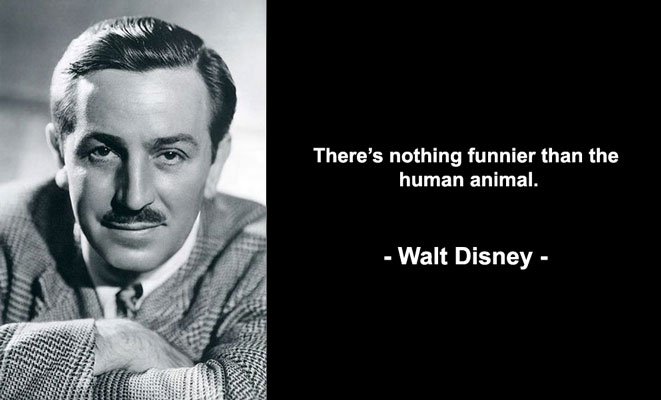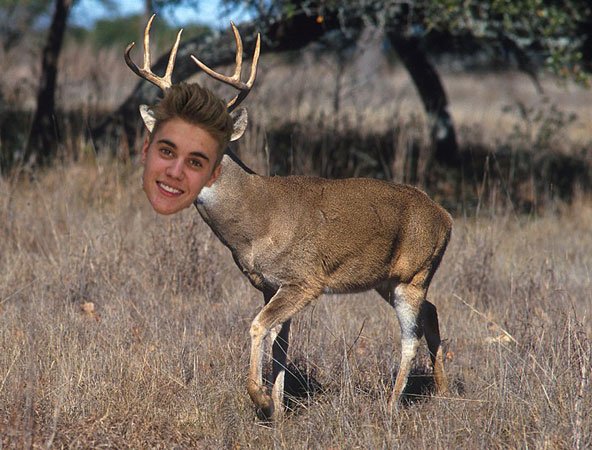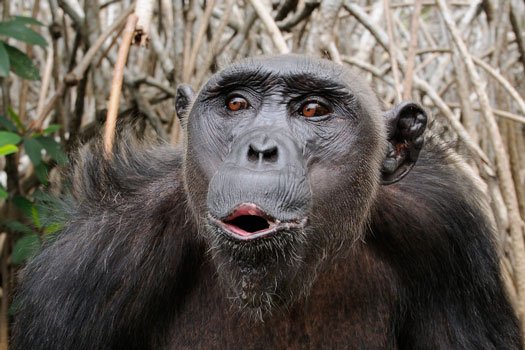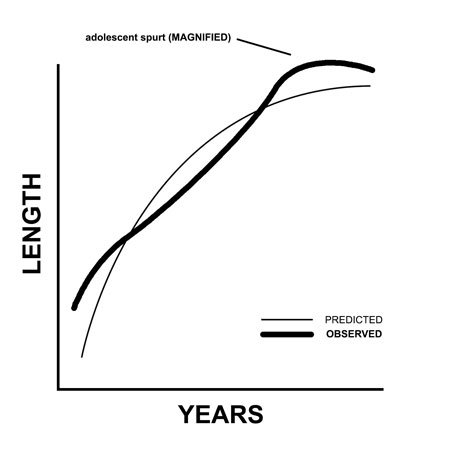
A teen's face trying to tell us something in Braille.
Source: ionascloset w/ Attribution 2.0 Generic license.
Curtain Open
"Humans are unique among primates."[1] Thus begins a piece published in Nature. But where does our uniqueness lie?
Aristotle stated that it's rationality that distinguishes the human from the animal. And yet some non-human animals exhibit rationality.
Marx shifted the emphasis to another one of Aristotle's ideas, asserting that a human is essentially a zoon politikon (a social/civic animal), who finds his essence in "creative social activity"[2]. Yet apes certainly form social and hierarchical bonds which can be likened to a nascent political system. (Ask Jane Goodall.)
On the other side of the ideological Atlantic, Adam Smith claimed that man is the only animal that makes bargains: "Nobody ever saw a dog make a fair and deliberate exchange of one bone for another with another dog." [Wealth of Nations, Book I, Chapter II, Paragraph 2.] Yet penguins and chimps exchange sex for rocks and meat[3].
Conor McGregor claimed that humans are the only animal that wakes up and doesn't stretch, but this reddit thread debunked that by citing fish.
Even humanism is apparently not unique to the humans, as a mere reading of the title of this book by primatologist Frans de Waal will attest: The Bonobo and the Atheist: In Search of Humanism Among the Primates.
And those who would take refuge to our opposable thumbs, will find out (perhaps by reading this article by @mobbs), that apes not only have those, but also opposable big toes.

So the inventor of formal logic said humans are essentially rational. The most famous political theorist espoused the idea that humans are at root a zoon politikon. The inventor of capitalism saw humans as barterers. And now a cartoonist says humans are the preeminent funny creature. I see a pattern forming here.
Source: Boy Scouts of America w/ Public Domain license, modified.
But maybe we're not completely out of luck in our search for the quintessential human quality. As I was researching the last of John Money's criteria for determining a person's sex and gender (i.e. pubertal hormones), I stumbled upon the claim that apparently only humans exhibit adolescence, or at least the growth spurt that is specific to it:
Not even our closest biologic relative, the chimpanzee [...] unequivocally exhibits [...] the unique human adolescent growth spurt.[4]
Surprised, I immediately took to Google, where it was confirmed that indeed there are no Justin Biebers in nature.

To the consternation of deer-hunting non-Beliebers, there's no such animal roaming in the wild.
Source: USDA photo by Scott Bauer & Miami Beach Police Department, w/ Public Domain license, modified.
And Wikipedia's article on adolescence doesn't mention non-human animals at all.
To bring this opening section full circle, let's finish with the piece in Nature that I quoted in the beginning. It talks about studies of the dental situation of fossil humans and fossil apes and comparisons to extant humans and apes. You see, the teeth can reveal the dental developmental patterns of their owner, and the dental developmental patterns can reveal the non-dental developmental patterns. And it appears that lengthy growth processes — among which are our adolescence and childhood periods — arose quite late in our evolution:
The slow rate of enamel growth that is typical of modern humans, and is associated with an extended growth period, is first seen with the large-brained Neanderthals.[1]
With that, let's now dive a bit deeper.
Argument from authority

Source: Raphael w/ Public Domain license
Though there are some who argue that adolescence is found in extant primates, Grumbach & Styne, who literally partly wrote, if not the, at least a textbook of endocrinology, only show the presence of an adolescent stage in the late Homo erectus, and since that evolved into us, Homo sapiens are the only ones in the line who have adolescence.
Furthermore, a footnote states that the chimp is identical to the pattern shown in our ancestor A. afarensis — who lacks adolescence — so that probably means no adolescence for primates, since the chimp is our closest relative.
Further-furthermore, the writers state that:
Tool making preceded the evolutionary development of adolescence[4]
So tool-making came first, adolescence second. And since non-human primates can barely fashion tools, if at all, this further bolsters the claim that adolescence is unique to humans.
But what is adolescence anyway?
Define your terms
Adolescence is certainly ascribed to other primates, as this title of a paper for example demonstrates: "Adolescent exaggeration in female catarrhine primates" (some female catarrhine primates, nota bene, are orange and sport big tufts of hair).

"Nobody is stronger than me." "There's nobody bigger or better at the military than I am." "Nobody loves the Bible more than I do." "Nobody's better to people with disabilities than me." "There's nobody that's done so much for equality as I have." "There's nobody that respects women more than I do." "There's nobody that understands the horror of nuclear better than me." Source
Source: Gage Skidmore from Peoria, AZ, United States of America w/ Attribution-Share Alike 2.0 Generic license.
I guess adolescent exaggeration is a universal feature.
What is not a universal feature is defining the word whenever you use it. It's most often used vaguely, as if what's meant should be readily evident.
But that's only good if you never thought hard about it. If we want to ask whether adolescence exists in other mammals, we must translate the term into something we can grapple with.
This is why authors have settled mostly on talking about the adolescent growth spurt, as it can not only be defined more accurately, but also studied mathematically, as this proud dad once did...
The first child in recorded scientific history to undergo height measuring?

"Young man, if you keep it up with that un-ruly behavior, one of these days I'm gonna take your measurement!"
Source: www.audio-luci-store.it w/ CC BY 2.0 license.
Count Philibert Guéneau du Montbeillard was a big-name 18th Century French aristocrat lawyer who contributed to Diderot's Encyclopédie. His article was called:
"Étendue", a philosophical treatment of the notion of extension.[9]
The Count knew a thing or two about extension — and about counting it — because his most famous contribution to science was his periodic 6-month measurements of the stature of his son from his birth to his 18th birthday. The measurements were included, with commentary, in George-Louie Leclerc de Buffon's Histoire Naturelle.
These data are usually considered as the first longitudinal study of human growth, and because of Buffon's commentary, the most famous.[6]
The data, you won't be surprised to know, was not controversial: you don't really need to convince anyone that adolescents exhibit a sudden and pronounced growth spurt.
Many scientists have written about the human adolescent growth spurt since the time of the Count, and no one had to deal with skepticism on the part of their colleagues or readers: anyone who's ever had a child has only to point to increasingly ill-fitting clothes to prove the point.
So why is this a controversial matter when it comes to other primates? Well, let's look at a paper that represents a paradigmatic and well-known (and by that I mean subsequently-referenced) attempt at proving the presence of an adolescent growth spurt in primates.
The case for

And we thought we invented the duck face.
Source: dsg-photo.com w/ CC BY-SA 3.0 license.
In Postnatal Growth of Nonhuman Primates: The Problem of the Adolescent Spurt, Watts & Gavan purport to show that a growth spurt exists in chimpanzees and rhesus monkeys.
They start by stating their prime motivation for studying the presence of the adolescent growth spurt in primates:
studies of postnatal growth in other anthropoid primates should be valuable in understanding the evolutionary derivation of the human growth curve[8]
Good, one needs to be aware of one's roots.
They proceed by stating, correctly, that previous studies on the matter:
have reached conflicting conclusions regarding the question of whether an adolescent spurt can be found in their growth curves.[8]
Regarding method, the first thing to consider is that humans are bipedal. It would be rather unfair to measure the height of primates that are not bipedal. So the authors, correctly, measured limb segments to reflect the growth of single long bones.
Both the rhesus monkeys and the chimps were measured from birth to at least 5 years in the case of the former and at least 12 years in the case of the latter.
So the growths were plotted, and now comes the moment of truth. What did they find?
They found that the growth curves were irregular and:
no well defined peak around the age of puberty could be discerned in the majority of subjects[8]
They didn't try to smooth the curves by eye because that might introduce too great an element of subjectivity. And so:
Since it is not possible to demonstrate the presence or absence of an adolescent spurt conclusively by means of simple analysis, the next logical step is to proceed to more sophisticated methods involving curve fitting by means of equations.
Yes, subjectivity was out of the question, so they resorted to objective "curve fitting".
Let's see what that entails exactly. How does one go about choosing the ideal equation?
though a variety of equations are available, choice of a specific equation to use nearly always requires making an advance assumption about whether or not a spurt exists.[8]
Equations that prove whatever you want them to prove? Gotta get me some of those!
They go on to cite the earlier work of the second author in the study, who owned the chimpanzee colony, where he tested the fit of 10 different equations on the same chimp population. The best fit was provided by an equation that didn't show any spurt.
Since the fit of this equation to the chimpanzee data was excellent, leaving average residual variances of less than one per cent, Gavan [...] concluded that it was a good model for chimpanzee growth and that this species did not possess an adolescent acceleration.[8]
This equation, however, was one of those that assumed that the growth did not exist. The author, of course, didn't choose it for that reason, but because it provided the best fit.
They tested the equation on the rhesuses, and the results were similarly good. The slight % variations existed here too. However:
The slight deviations of the actual values from the growth curve depicted by the equation could be attributed to measurement error.[8]
Seems fair enough.
But here comes the rub: rather than exhibiting a random scatter — as would be the case if the variations were the result of measurement error — the variations showed consistency:
Deviations are positive in infancy, become negative during childhood, change to positive again during adolescence, and become negative once again as the end of the growth period is reached.[8]
White-clad people announcing that they found a growth is not usually good news, but in this case the researchers were understandably elated.
It's a growth, but is it really a spurt?

Source: dolfinmagikpro w/ CC0 Creative Commons license.
Now, I would like to show you the deviations — preferably by plotting the curve of actual values next to the curve of the predicted values — but there's a slight problem, and it's not just copyright:
With such slight differences it is impossible to depict two distinct curves in a plot of this size.[8]
Come again?
The differences are so small that you can't even see them in a plot — the two lines would just mesh? But then how did the authors....oh, they multiplied the actual deviations so they could be seen.
This is a rather important point, let's not skim it: When the Count Philibert Guéneau du Montbeillard was measuring his son's François Guéneau de Montbeillard's height, he didn't resort to any "multiplying" — other than the one he did by producing progeny in the first place. The spurt was obvious (ahem). One could even go so far as to claim that obviousness is, or should be, part of the definition of a spurt. Consider some of the definitions of the word by the Oxford English Dictionary:
Gush out in a sudden and forceful stream
Cause to gush out suddenly
A sudden marked burst or increase of activity or speed
This is hardly the kind of thing that you need a magnifying glass to notice.

Consider that if you wanted to prove that your child exhibits a growth spurt, all you'd need would be a door and some chalk.
Source: woodleywonderworks w/ CC BY 2.0 license.
Back to the paper:
[T]he observed curve shows a leveling off during childhood and a rise around the age of puberty. These changes give the actual curves a sigmoid shape similar to that commonly seen in human curves.[8]
You see, as humans we exhibit a spurt during childhood, then a slowing down, and then a spurt during adolescence. So that results in an S shape (more like the S in a doctor's prescription though rather than a calligrapher's).

I've labeled where the purported adolescent "spurt" is supposed to be. Without magnification and without labeling and without the predicted curve for comparison, you'd scarcely be able to see it. Literally:
The second set of positive deviations, indicating rapid growth, probably corresponds to the adolescent growth spurt of man, though it is much smaller in magnitude and can be discerned only when compared to the predicted curve.[8]
Probably? Maybe we can find greater certainty in the other side of the debate.
The case against
-.jpg)
Is there such a thing as non-human teenagers?
Source: GabboT w/ CC BY-SA 2.0 license.
In a broad survey of the literature relating to the topic of this post, Bogin concludes that:
the human adolescent growth spurt in stature and skeletal maturation is [...] not found in any other primate species.[6]
How did he arrive to that conclusion? And why is it that the 3 classic researchers on this topic agree that "the majority of mammals progress from infancy to adulthood seamlessly, without intervening stages of development"?[6]
Well, first of all, take for example data gleaned from many studies of the growth rates of mice and cows, rates that are "typical for most mammals"[6]. Here's one of several differences between them and humans:
human puberty initiates a series of changes in endocrine function that leads to the adolescent growth spurt. In contrast, growth rates of mice and cows continue to decline after puberty.[6]
And the size of the mammal doesn't seem to matter. The growth curve of Holstein cattle (2640 kg mean adult weight) is virtually identical to that of mice![6]
It's interesting to note that some researchers, though they might seem to disagree with Bogin's thesis if you read them without commentary, in fact don't. Or wouldn't. For example, Brody, a classic researcher on the topic, was keen on proving that all animals exhibited the same growth curve, be it single cells or pigs or humans. The only human growth spurt Brody knew about was the adolescent growth spurt, and therefore equated it with the single growth spurt observed in other mammals soon after birth.
But humans — partly because the average is only one baby per birth — achieve their maximum growth rate while still in their mother's belly, and their growth rate decelerates after birth. Other mammals (in whom litters are the norm) achieve their maximum growth rate after birth. The proper thing to equate with the growth spurt of mammals after birth is the growth spurt of humans before birth, not the adolescent growth spurt as Brody did.
Brody's work had a strong influence on the study of human and animal growth, and that might explain why we still find articles that mention adolescence in non-human mammals:
Even today, it is common to read about adolescent growth spurts or an adolescent phase in animals, such in as [sic] rodents or farm animals, but it is not like human adolescence.[6]
To murk matters even further, in Brody's work, "no distinction is made between puberty and adolescence"[6].
Note that Brody's work was original and ingenious, and prescient in a lot of ways, so some mistakes will be forgiven given the lack of knowledge at that time. Brody's attempt to unify the growth curves of all mammals, size notwithstanding, was mostly borne out. As I mentioned above, the growth curves of cows and mice are virtually identical.
Some differences

How different must a thing be before you call it by another name? (Pictured are Paris Hilton and Paris, Hilton.)
Source: Toglenn w/ CC BY-SA 1.0 license & Gary Bembridge w/ CC BY 2.0 license, modified & under the same license as the originals.
Recall that researchers zeroed in on the growth spurts because they were easier to define and amenable to mathematical calculations, and so hopefully through them they'd be able to answer the question of whether adolescence exists in other mammals. Sadly, the definitional aspects of the issue don't let up to easily.
For example, growth spurts could happen in isolation — be it a body part or just one sex in the species — do we admit these as genuine growth spurts? For example, a researcher named Leigh writes:
my recent studies of baboons demonstrate unambiguous growth spurts in the snout [...] The presence of these spurts, however, does not imply homology with human growth spurts in stature.[6]
Yes, Pinocchio growth spurts. Leigh's statement mirrors a warning in the Nature piece with which I began this article:
[T]he thick enamel of modern human teeth may not be homologous to the thick enamel of early hominins, being the result of a different developmental process. This finding underlines the importance of incorporating information on developmental mechanisms when interpreting the significance of certain traits in analysing evolutionary relationships[1]
Calling something by the same name might imply it's the result of the same developmental process, or serves the same evolutionary function, or is evolutionarily related — when in fact it is not and so a different term would perhaps serve better.
Another example of difference: what does one do when a primate relative of ours exhibits a growth spurt in weight but not in other areas? After all, plenty of humans exhibit a weight spurt in adulthood (perhaps because of Ben & Jerrys), but we don't call it a growth spurt!
Also, how much can we rely on the data, given that most of it is taken from animals kept in captivity? It's well known that lifestyle has a great effect on growth. Just ask the people who live in high altitudes and suffer stunted growth because of it (or if you don't know any personally, read this article).
Talking about a longitudinal analysis paper of skeletal growth in female rhesus monkeys, Bogin states:
the pattern of growth and growth spurts seen for the nine monkeys housed indoors differs significantly from that of the six outdoor-housed monkeys.[6]
Note that the adolescent growth spurt for humans is found in all of us, both those who are housed indoors and those who are housed outdoors.
The human adolescent spurt is also unwavering, whereas that of certain primates, like the rhesus monkeys above, fluctuates "from near-maximum velocity to near-minimum velocity between adjacent measurements"[6]. That's like your adolescent child failing to grow at all in a whole year, only to grow that and then some in the next.
And another difference: The human growth spurt lasts many years, the primates' is short-lived.
And another: The hormones excreted after puberty are comparable in humans and other primates — for instance, 400 ng/dl serum testosterone for male chimps and 340 ng/dl for human males — but the chimps grow a few ml in stature according to the "case for" work examined in this post. Their weight growth is slight too, and in the females it might be completely absent.
Let's take the last point and make it a separate one: in humans, the growth spurt happens in both sexes. Can we call something an adolescent growth spurt when only the male sex of a primate species exhibits it?
In sharp contrast to the chimpanzee research are the findings for human boys and girls that show relatively large and easily detectable growth spurts for both height and weight during adolescence.[6]
So, to repeat, how much should something differ before we call it by another name?
Curtain Close

Did Simba have an adolescence? Jordan Peterson seems to think so.
Source: 5718714 w/ CC0 Creative Commons license.
"You've grown so much". No doubt you've heard that ad nauseaum as a teen. It's never surprising to the person who undergoes this growth, but to the objective observer, you're a different person every time they see you. Science confirms it:
One of the most striking features of human postnatal growth is the increase in growth velocity of many body dimensions that occurs at adolescence.[8]
The question whether adolescence is unique to humans does not admit of an easy answer. One reason for this has to do with definitions: what do we consider adolescence to be? Let's turn to wikipedia:
scholars have found it difficult to agree upon a precise definition of adolescence[5]
Oh, well. Let's go directly to a scientific paper then:
Hamada et al call these last two phase [sic] of bone maturation the midadolescent trough and the postadolescent peak. I would substitute the word juvenile for adolescent, but whatever one calls these changes in rate of bone maturation, they have no parallel in the human condition.[6]
No luck there either, then.
The overall conclusion, however, seems to be that adolescence in primates either does not exist, or it barely exists to the point of being insignificant for the purposes of non-specialists. The strongest evidence we have for a unique adolescent spurt is human bone and structural growth. If it exists at all in other primates, it's more like a clew than the exit from the labyrinth itself.
So for once, I'll leave this open to the judgement of the reader, since it seems to be so much a definitional issue. Ask yourself, what do you consider necessary and sufficient conditions for adolescence? Is it possible for just one sex to have adolescence? Is it a growth spurt when you only grow 1 cm? Is it an adolescence when it's over in 6 months? What's the difference between it and puberty? Maybe some of these questions will help guide you in forming an opinion on the matter, and take it with a grain of salt when a wild life documentary narrator mentions adolescent animals, especially when they're not even primates (click to watch "adolescent" lions).
Uncredited pics by yours truly.
REFERENCES
Moggi-Cecchi, J. (2001). Human evolution: Questions of growth. Nature, [online] 414, pp.595-597. Available at: https://doi.org/10.1038/414595a.
Wilde, L. (2000). ‘The creatures, too, must become free’: Marx and the Animal/Human Distinction. Capital & Class, [online] 24(3), pp.37-53. Available at: http://dx.doi.org/10.1177/030981680007200103.
Wikipedia contributors, "Prostitution among animals," Wikipedia, The Free Encyclopedia, https://en.wikipedia.org/w/index.php?title=Prostitution_among_animals&oldid=844230054 (accessed July 8, 2018).
Melmed, S., Polonsky, K., Larsen, P. and Kronenberg, H. (2016). Williams textbook of endocrinology. 13th ed. Philadelphia: Elsevier, Inc., pp.1089-1218. Available at: https://www.elsevier.com/books/williams-textbook-of-endocrinology/9780323297387.
Wikipedia contributors, "Adolescence," Wikipedia, The Free Encyclopedia, https://en.wikipedia.org/w/index.php?title=Adolescence&oldid=848040651 (accessed July 8, 2018).
Bogin, B. (1999). Evolutionary Perspective on Human Growth. Annual Review of Anthropology, [online] 28(1), pp.109-153. Available at: https://doi.org/10.1146/annurev.anthro.28.1.109.
Gavan, J. (1982). Adolescent Growth in Non-Human Primates: An Introduction. Human Biology, [online] 54(1), pp.1-5. Available at: http://www.jstor.org/stable/41463348.
Watts, E. and Gavan, J. (1982). Postnatal Growth of Nonhuman Primates: The Problem of the Adolescent Spurt. Human Biology, [online] 54(1), pp.53-70. Available at: http://www.jstor.org/stable/41463353.
Wikipedia contributors, "Philippe Guéneau de Montbeillard," Wikipedia, The Free Encyclopedia, https://en.wikipedia.org/w/index.php?title=Philippe_Gu%C3%A9neau_de_Montbeillard&oldid=785299175 (accessed July 14, 2018).
Dang, S., Yan, H. and Yamamoto, S. (2007). High altitude and early childhood growth retardation: new evidence from Tibet. European Journal of Clinical Nutrition, [online] 62(3), pp.342-348. Available at: https://www.nature.com/articles/1602711.
steemSTEM is the go-to place for science on Steemit. Check it out at @steemstem or browse the #steemSTEM tag or chat live on discord
Well... I read right to the bottom of this and you didn't loose me. With all the mentions of spurts it was certainly a lot of mental masturbation to say the least. I enjoyed the photos in context with the witty text so I guess I could say that you have managed to make a very dull subject amusing at least! Thanks for the laugh our loud humor @alexander.alexis.
😄
I find all your articles incredibly well assembled. Also, I am always impressed by the thorough research you carry out in order to put your articles together. Nevertheless, this one has fascinated me in particular. I think it is because you cited a lot of studies on bonobos, rhesus monkeys, chimpazees etc.. ( it is kind of my (one of) obsession)! So... Penguins also exchange sex for goods, huh? Going straight to read about that! I am also fascinated about non-human animal behaviour. But all I know about bird’s behaviour I learnt from BBC documentaries 😛!
All the best to you Alexander :)
Penguins are complete perverts :P
Thanks for your kind words! I appreciate your readership.
Nice name drop.
I never considered this as a uniquely human trait when writing my post, though one thing that interests me is how we're apparently hitting adolescence younger as each generation goes by, as much as five years earlier than 100 years ago.
Maybe it'll come at such a young age that we'll eventually lose adolescence entirely and regress back to being chimpanzees, the old model of humans.
God must have made a mistake with adolescence, is my thinking
Earlier periods (and consequent development) are mostly the result of increased BMI (read fat) coupled with increased socioeconomic development. But I think you already knew that :D I'm gonna include a bit on that probably in my next article.
Someone's watched Altered States one too many times :P
First of all, let me thank you for the entertaining gems sprinkled through this piece. For example:
At some point in your essay I thought of marsupials. I did some Google searches and discovered the tammar. This mammal, native to Australia, has a growth curve represented by an "S" on a graph. It has an early spurt (in the pouch), a leveling off, another growth spurt, and another leveling off. This occurs in both sexes, and during the second spurt, rapid growth is also "seen in limb bones.". I know nothing about tammar endocrinology. Actually, I know nothing about tammars, except what I just learned. I just thought it was an interesting bit of trivia in light of your discussion.
Also, wildlife documentaries will never be the same for me :)
Somehow the image of a marsupial seems quite representative of adolescence, symbolically. Dunno why!
Thanks for reading and commenting ))
Does the wrong definition and humanization of other animals disturb you in the use of language and perception of us humans? I'm not quite sure how I should take up your article. Do you want things to be understood biologically correct by viewers when we talk about the animal kingdom or watch documentaries? I think it is quite harmless that we humans call young animals adolescents, or even teenagers, because it gives us access and compassion for the animals. The humanization may serve me that I do not like mammals for eating alone, but that I wish to preserve animal habitat.
But since I am not with animals, no farmer, no zoo worker, ranger or observer of animals in the wild, but only a city dweller who has to do with human animals, I cannot judge all this very well.
To what extent is it relevant for a cell biologist to know that there is no growth spurt except perhaps in primates?
I am no cell biologist first of all, despite what some of my articles apparently might lead someone to believe!
I just thought it was interesting that perhaps only humans have real adolescence. That's all. It would be equally interesting if only humans had a childhood or whatever.
Juvenile lions exist, so why not just call them that?
I'm just interested in accuracy. I've seen too many inaccurate descriptions lead to full-blown fallacies, even from people who should know better because it's their field, so I'm in favor of being careful about how we use our vocabulary.
I'm not against loose language, as long as the person understands well that he is using it metaphorically.
People's emotional language toward animals leads some to what I believe is probably a whole lot of projection of humanity that's just not there. People even do it with plants and are quite convinced that plants can feel things.
But anyway, I love animals myself, and had many as a kid and still do. I found that tidbit about adolescence by accident in a book on endocrinology I was reading and it fascinated me and I started looking into it and then a whole post was produced out of that.
Thanks for reading!
I am sometimes forgetful to give a sign of recognition to your work (it happens not only with you but with all people I feel familiar with:) - your research on this (and all other topics) is extraordinary.
And indeed, if I had been asked if animals were going through adolescence, I might have guessed "yes".
Yes, that is so. If the projection helps to protect animals I am not so much against it :) But also, this projection led to the extinction or their endangering. I don't know where but I somewhere read that the white shark suffered a lot of threat from humans after that movie with Roy Scheider came out. And "Moby-Dick" as well might have disturbed the image of the Wales.
I am aware of this and I hope people in general start to be aware of their projections. I sometimes talk to my plants, that gives me a feeling of peace. LOL!
Great writing, educational, thoughtful and sparkling funny at the same time. I read 4 of your posts today and I liked all of them, I was very entertained and interested from start to finish. Great. great work. It's a bit late for a meaningful upvote, but for comment is never too old.
Thanks a lot! I don't mind the upvotes, comments like this are more appreciated!
This post has been voted on by the steemstem curation team and voting trail.
There is more to SteemSTEM than just writing posts, check here for some more tips on being a community member. You can also join our discord here to get to know the rest of the community!
Hi @alexander.alexis!
Your post was upvoted by utopian.io in cooperation with steemstem - supporting knowledge, innovation and technological advancement on the Steem Blockchain.
Contribute to Open Source with utopian.io
Learn how to contribute on our website and join the new open source economy.
Want to chat? Join the Utopian Community on Discord https://discord.gg/h52nFrV
This post has been revived by steem-forever and will get extra rewards. This happens when a post is upvoted on steem-bounty.com after the 7 day post life.
Users can simple upvote via steem-bounty.com continously, so posts can live and earn rewards forever.
Authors can share their steem-bounty.com links and get upvoted forever.
We hope this will allow everyone to earn more meaningful rewards over longer timeframes than before.
This post has been revived by steem-forever and will get extra rewards. This happens when a post is upvoted on steem-bounty.com after the 7 day post life.
Users can simple upvote via steem-bounty.com continously, so posts can live and earn rewards forever.
Authors can share their steem-bounty.com links and get upvoted forever.
We hope this will allow everyone to earn more meaningful rewards over longer timeframes than before.
Congratulations @alexander.alexis! You have completed the following achievement on Steemit and have been rewarded with new badge(s) :
Click on the badge to view your Board of Honor.
If you no longer want to receive notifications, reply to this comment with the word
STOPHello, i just upvoted your post. Also, $10 - $160 Reward is waiting for you in GBYTE crypto, please
follow instructions in this post:
https://steemit.com/steemit/@cryptomonitor/airdrop-how-to-claim-tutorial-byteball-bytes-airdrop-to-steemians-hot .
Join our Discord & enjoy happy STEEM community: https://discord.gg/qQZ7Eng